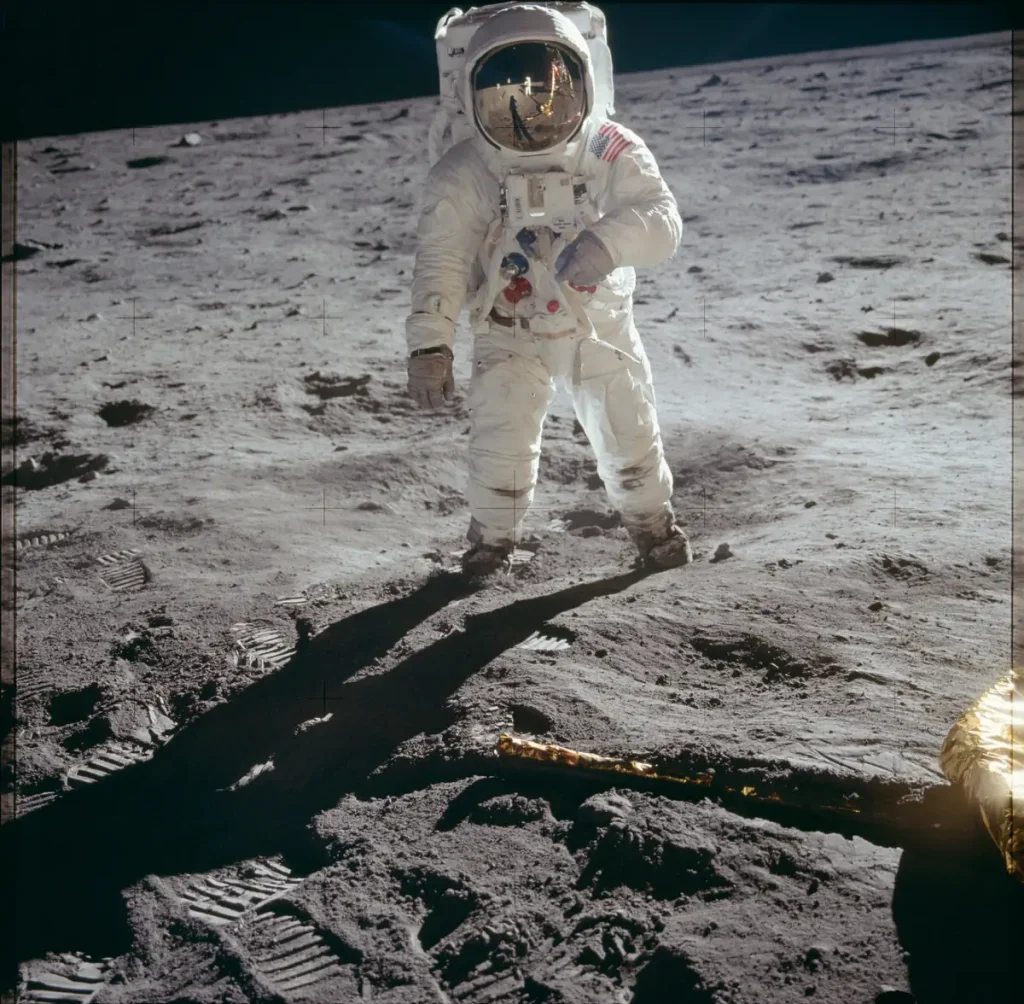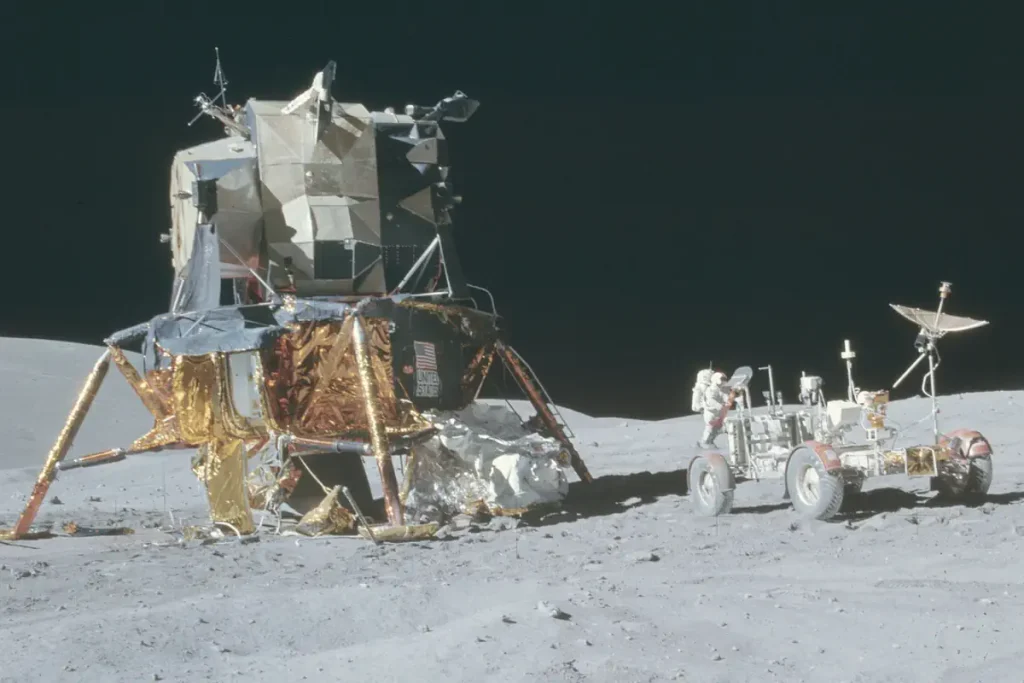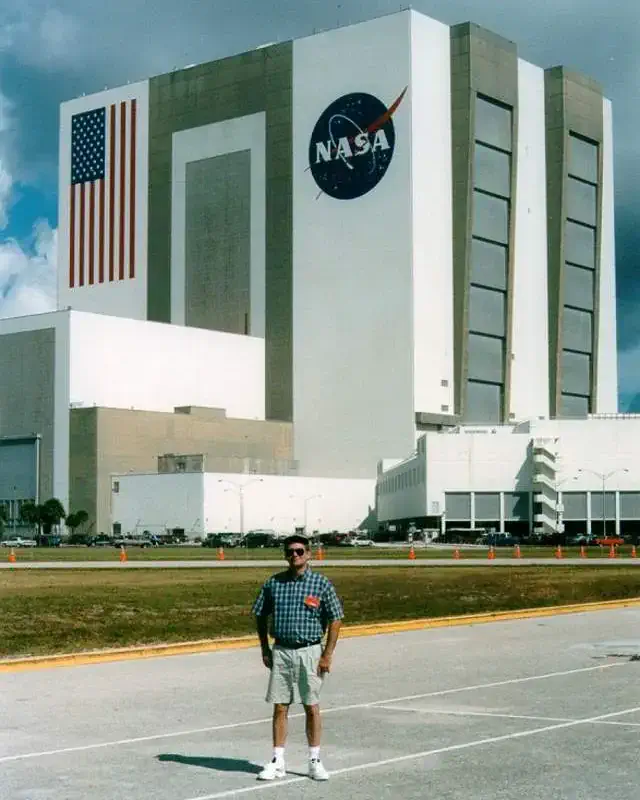The Apollo program is a significant milestone in the history of space exploration. During the program, NASA sent astronauts to the moon and captured breathtaking photographs of the lunar surface and space. These photographs have been treasured by space enthusiasts and researchers alike for decades, and now, they are available for everyone to access. Thanks to a collaboration between NASA and Flickr, a vast collection of Apollo program photographs, spanning from 1966 to 1972, is now freely available on the photo-sharing platform. This unprecedented move allows people to explore and use these historic images in new and creative ways.
Network and administrative data systems specialist and Project Apollo Archive‘s creator Kipp Teague recently updated new and unprocessed versions of original NASA photo scans to the image-sharing site. All the photos are free to use!
You can see all the archives on the Project Apollo Archive page on Flickr. The photos are taken by the Sweden-made “Hasselblad” cameras from the Earth, from the Lunar orbit, and on the surface of the Moon by astronauts with their chest-mounted cameras.
Apollo Program

The Apollo program, also known as Project Apollo was a series of space missions (both crewed and uncrewed) conducted by the United States from 1966 to 1972 with the goal of landing a human on the Moon and returning them safely to Earth. The program resulted in six successful lunar landings, with the first one taking place in 1969.
It was the third United States human spaceflight program (the first two were Project Mercury, between 1958 and 1963, and Project Gemini, between 1961 and 1966) carried out by the National Aeronautics and Space Administration (NASA), which accomplished landing the first humans on the Moon from 1969 to 1972. The first crewed flight of the Apollo Program was in 1968.
The Apollo program was significant because it represented a major technological achievement and marked the first time in history that human beings had walked on another celestial body. It also advanced scientific understanding of the Moon’s geology, helped develop new technologies, and inspired future generations to pursue careers in science and engineering. The program’s legacy continues to influence space exploration efforts today.

List of Apollo Program missions
- AS-201 (February 27, 1966): First flight of Saturn IB and Block I CSM (Command and Service Module); suborbital (see Notes 1) to the Atlantic Ocean; qualified heat shield to orbital reentry speed.
- AS-203 (July 5, 1966): The first Apollo orbital mission. Made observations of liquid hydrogen fuel behavior in orbit to support the design of S-IVB restart capability.
- AS-202 (August 25, 1966): Suborbital flight of CSM to the Pacific Ocean.
- Apollo 1 (February 21, 1967): Not flown. All crew members (Gus Grissom, Ed White, and Roger B. Chaffee) died in a fire during a launch pad test on January 27, 1967.
- Apollo 4 (November 9, 1967): First test flight of Saturn V, placed a CSM in a high Earth orbit. It demonstrated S-IVB restart and qualified CM heat shield to lunar reentry speed.
- Apollo 5 (January 2-23, 1968): Earth-orbital flight test of LM (Lunar Module), launched on Saturn IB. It demonstrated ascent and descent propulsion and human-rated the LM.
- Apollo 6 (April 4, 1968): Uncrewed, the second flight of Saturn V, attempted a demonstration of trans-lunar injection, and direct-return abort using an SM engine. During the mission, three engine failures occurred, including the failure of the S-IVB restarts. Flight controllers used the SM (Service Module) engine to repeat Apollo 4’s flight profile. Human-rated the Saturn V.
- Apollo 7 (October 11-22, 1968): First crewed Earth orbital demonstration of Block II CSM, launched on Saturn IB. The first live television publicly broadcast from a crewed mission. Crew: Wally Schirra, Walt Cunningham, Donn Eisele.
- Apollo 8 (December 21-27, 1968): The first crewed flight of Saturn V, the first crewed flight in Apollo Program, the first spaceflight to the Moon, and the first humans to leave the Low Earth Orbit (LEO). CSM made 10 lunar orbits in 20 hours. The first earthrise has ever been seen directly by humans. Crew: Frank Borman, James Lovell, William Anders.
- Apollo 9 (March 3-13, 1969): Second crewed flight of Saturn V and the first crewed flight of CSM and LM in Earth orbit. It demonstrated a portable life support system to be used on the lunar surface. Crew: James McDivitt, David Scott, Russell Schweickart.
- Apollo 10 (May 18-26, 1969): The mission was a dress rehearsal for the first lunar landing. LM flew down to 50,000 feet (15 km) from the lunar surface. Crew: Thomas Stafford, John Young, Eugene Cernan.
- Apollo 11 (July 16-24, 1969): The first crewed lunar landing, in Tranquility Base, Sea of Tranquility. Surface EVA time: 2:31 hr. Samples returned: 47.51 pounds (21.55 kg). Crew: Neil Armstrong, Michael Collins, Buzz Aldrin.
- Apollo 12 (November 14-24, 1969): The second Moon landing, in the Ocean of Storms near Surveyor 3. Surface EVA time: 7:45 hr. Samples returned: 75.62 pounds (34.30 kg). Crew: C. “Pete” Conrad, Richard Gordon, Alan Bean.
- Apollo 13 (April 11-17, 1970): Third landing attempt was aborted in transit to the Moon, due to SM failure. The crew used LM as a “lifeboat” to return to Earth. Mission labeled as a “successful failure”. Crew: James Lovell, Jack Swigert, Fred Haise.
- Apollo 14 (January 31-February 9, 1971): The third Moon landing, in Fra Mauro formation, located northeast of the Ocean of Storms. Surface EVA time: 9:21 hr. Samples returned: 94.35 pounds (42.80 kg). Crew: Alan Shepard, Stuart Roosa, Edgar Mitchell.
- Apollo 15 (July 26-August 7, 1971): First Extended LM and rover, landed in Hadley-Apennine, located near the Sea of Showers/Rains. Surface EVA time:18:33 hr. Samples returned: 169.10 pounds (76.70 kg). Crew: David Scott, Alfred Worden, James Irwin.
- Apollo 16 (April 16-27, 1972): Landed in Plain of Descartes. Surface EVA time: 20:14 hr. Samples returned: 207.89 pounds (94.30 kg). Crew: John Young, T. Kenneth Mattingly, Charles Duke.
- Apollo 17 (December 7-19, 1972): The last mission of the Apollo Program. The first and only Saturn V night launch. Landed in Taurus-Littrow. The first geologist on the Moon. Apollo Program’s last crewed Moon landing. Surface EVA time: 22:02 hr. Samples returned: 243.40 pounds (110.40 kg). Crew: Eugene Cernan, Ronald Evans, Harrison Schmitt.


Hasselblad cameras
Victor Hasselblad AB is a Swedish manufacturer of medium-format cameras and photographic equipment based in Gothenburg, Sweden. The company is best known for the medium-format cameras it has produced since World War II.
Perhaps the most famous use of the Hasselblad camera was during the Apollo Program missions when humans first landed on the Moon. Almost all of the still photographs taken during these missions used modified Hasselblad cameras.
Hasselblad’s traditional V-System cameras remain widely used by professional and serious amateur photographers. One reason is a reputation for the long service life and the quality of available lenses. Their newer H-System cameras are market leaders, competing with Sinar, Mamiya, and others in the medium-format digital camera market.

Kipp Teague is a native of Lynchburg, Virginia, where he is currently employed by Lynchburg College as a network and administrative data systems specialist. An alumnus of the University of Virginia, Mr. Teague also has a wide variety of personal interests, which are well-represented on his RetroWeb site, which he hopes you will visit. The site features Teague’s Apollo Program retrospective Contact Light, which includes a superb collection of high-resolution Apollo Program images and film clips.
Notes
- When a spacecraft reaches outer space, but its trajectory intersects the atmosphere or surface of the gravitating body from which it was launched so that it will not complete one orbital revolution, this is called a “suborbital spaceflight“.
Sources
- Hasselblad on Wikipedia
- Apollo program on Wikipedia
- Apollo Program Missions page on the NASA website
- What Was the Apollo Program? on the NASA website
- Space Shuttle Endeavour’s Touchdown Meets Columbia’s Salute [An amazing photo from the past] - February 29, 2024
- Moon Landings: All-Time List [1966-2024] - February 23, 2024
- From Orbit to Ordinary: 10 Earthly Applications of Space Technology - January 23, 2024

